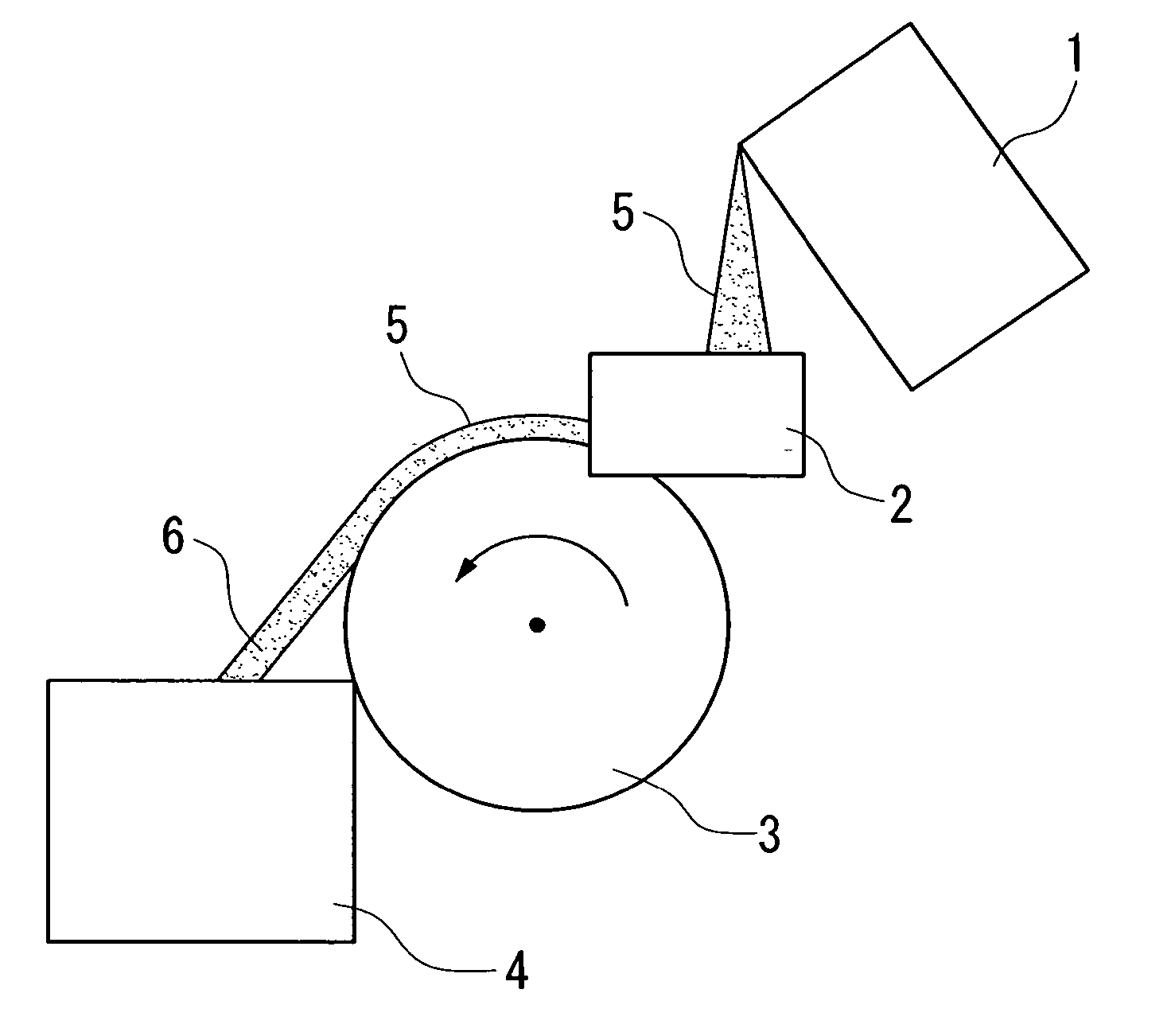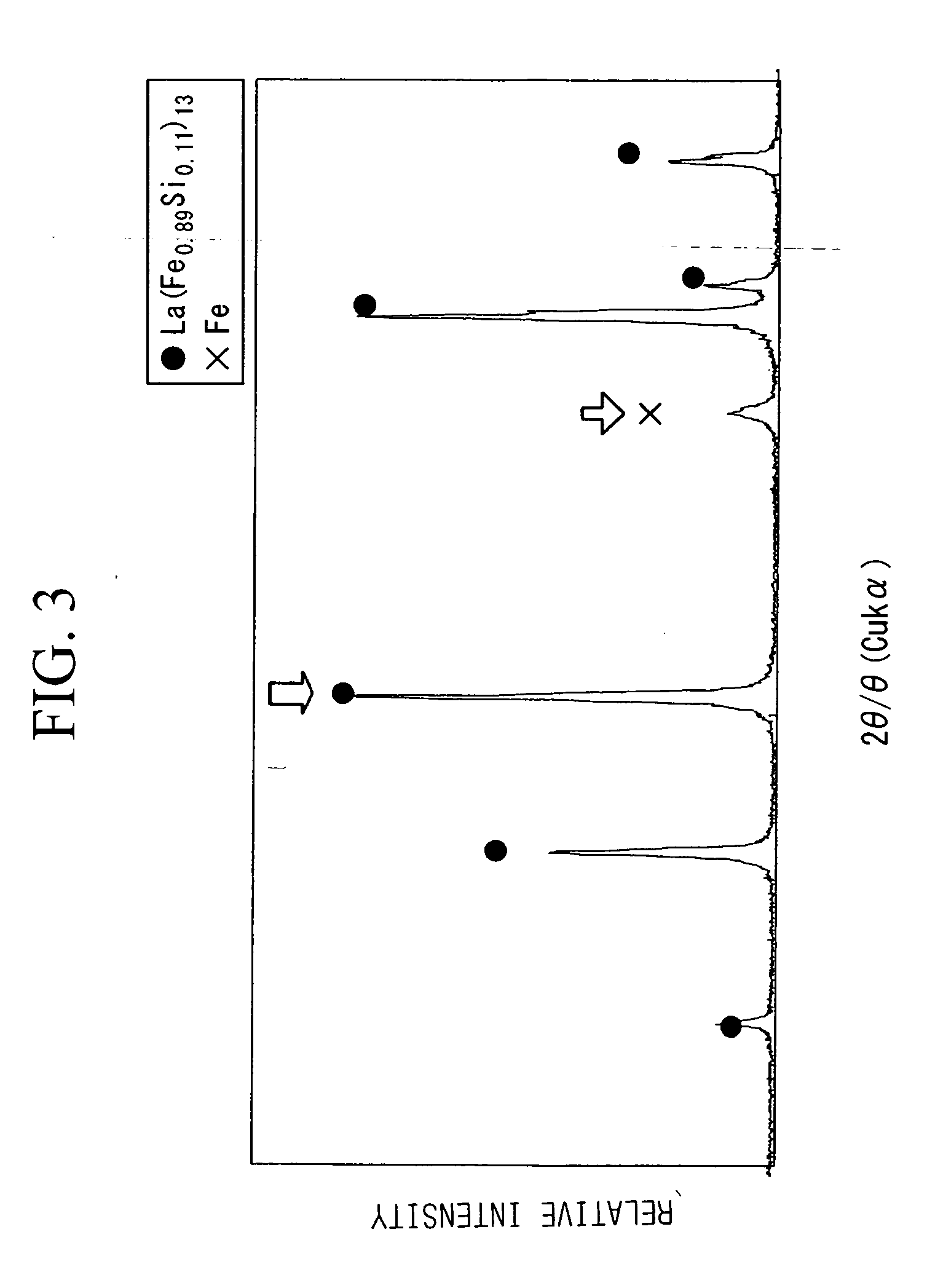Alloy containing rare earth element, production method thereof, magnetostrictive device, and magnetic refrigerant material
a technology of rare earth elements and magnetostrictive devices, which is applied in the selection of device materials, lighting and heating apparatuses, and magnetic bodies, etc. it can solve the problems of ggg not being used in a commercial product, compound cannot be applied to the magneto-displacement devices for controlling minute displacement, and the generated displacement is difficult to control. achieve the effect of high efficiency, low cost and reliable production
- Summary
- Abstract
- Description
- Claims
- Application Information
AI Technical Summary
Benefits of technology
Problems solved by technology
Method used
Image
Examples
example 1
[0132] Metallic La (serving as a source of rare earth metal (R)), electrolytic iron (serving as a source of transition metal (T)), and metallic Si (serving as a source of element (A)) were weighed and mixed such that an alloy composition of La(Fe0.88Si0.12)13 was attained. The mixture was melted in an Ar atmosphere at 0.1 MPa, by means of heating to 1,600° C.
[0133] Subsequently, by means of a strip casting apparatus shown in FIG. 1, the molten metal was poured, onto a copper roller which was cooled with water and rotating at a rotating speed of 0.882 m / s, at a pour rate of 150 g / s and a width of 85 mm, to thereby rapidly quench the molten metal, whereby alloy strips having a thickness of 0.28 mm were produced. The cooling rate as measured within a range of 1,600 to 900° C. was found to be approximately 1×103° C. / sec.
[0134]FIGS. 10 and 11 are back-scattered electron images of a cross-section of a sample of the produced alloy strips. The image of FIG. 11 is an enlarged image of FIG....
example 2
[0142] Metallic La (purity: ≧98 mass %) (6.5 at. %), pure iron (purity: ≧99 mass %) (83.2 at. %), and metallic Si (purity: ≧99.99 mass %) (10.3 at. %) were melted under Ar, and the molten alloy was cast through strip casting, to thereby produce alloy strips having a thickness of 0.25 mm. Subsequently, the thus-cast La—Fe—Si alloy was heated in a vacuum at 1,100° C. for 12 hours.
[0143] The thus-produced La—Fe—Si alloy was pulverized by means of a disk mill, and the formed powder was classified by use of a sieve (100 μm). The pulverization efficiency was found to be 1.2 kg / h. Subsequently, the thus-produced powder was compacted in a nitrogen atmosphere at a compacting pressure of 1.0 t / cm2. The compact was sintered in a vacuum at 1,280° C. for three hours, followed by heating at 1,100° C. for 12 hours, to thereby produce sintered La(Fe0.89Si0.11)13 alloy.
[0144] X-ray diffractometry of the sintered alloy shows that the relative peak intensity of La(Fe0.89Si0.11)13 alloy, having NaZn1...
PUM
| Property | Measurement | Unit |
|---|---|---|
| Temperature | aaaaa | aaaaa |
| Temperature | aaaaa | aaaaa |
| Temperature | aaaaa | aaaaa |
Abstract
Description
Claims
Application Information
 Login to View More
Login to View More - R&D
- Intellectual Property
- Life Sciences
- Materials
- Tech Scout
- Unparalleled Data Quality
- Higher Quality Content
- 60% Fewer Hallucinations
Browse by: Latest US Patents, China's latest patents, Technical Efficacy Thesaurus, Application Domain, Technology Topic, Popular Technical Reports.
© 2025 PatSnap. All rights reserved.Legal|Privacy policy|Modern Slavery Act Transparency Statement|Sitemap|About US| Contact US: help@patsnap.com



